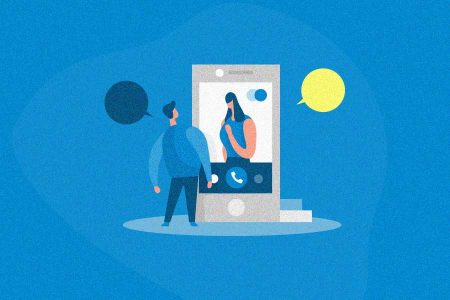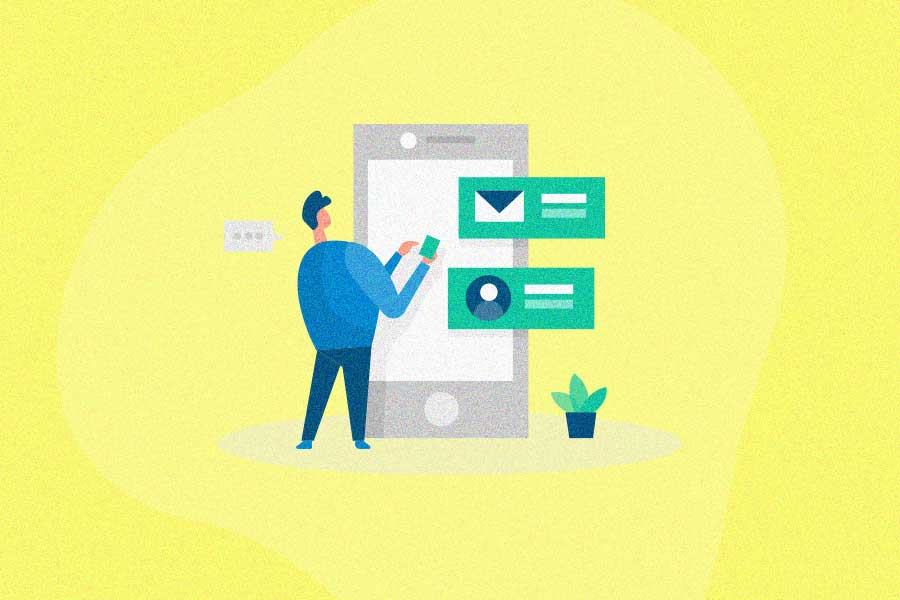Be honest: when was the last time a brand really hooked you in?
For me, it happened a few months ago with Llamalife – a productivity time tracker that broke into my house (ok, not really, but it might as well have because it felt like it could read all my thoughts).
Coming up for air from piles of never-ending lists, you could say I was a fan. Finally someone understood me! And it didn’t just talk the talk – it actually organized my life and helped me stay on track. I couldn’t wait to tell all my friends about it (I’ve spared you from the other 5 paragraphs and 3 minute audio message):
When you feel so seen, you find yourself a self-professed sales rep: “This is so you,” or “This is so me.” That’s the magic of word-of-mouth marketing: sharing the love!
So what makes some people rave about a brand, and others stay silent despite loving your product?
There’s a whole art – and psychology – to it.
And it starts with not being as *stale* as an 8 day-old piece of toast.
Are some brands starting to feel bland?
I’m sure you’ve seen those LinkedIn posts, sales emails, or ad content that bored you to tears despite YOU being the target market.
23 different brands all singing the same monotonous song:
“Join our webinar to learn about the value of automation!”
“Boost team efficiency and revenue.”
“Here’s our new feature with a vague name that no one and their mother or their cat understands until you watch the 1 hour video or book a demo.“
I can’t tell if I’m the only one who can’t scroll fast enough?
- It feels vague
- It feels “salesy”
- It’s not relevant
- It’s doesn’t feel helpful
- It doesn’t “spark joy”
Without a crumb of originality or truly “getting” the fears or anxieties of your customer, who would want to share an average brand that’s so surface-level?
A trés tragique cautionary tale of what not to do.
How do you stand out in a growing epidemic of ‘boring’?
To hook customers in, I like to be more specific. As a customer-obsessed marketer, here’s how I approach it:
- What are they actually saying about you and your brand?
- How can you show them you know exactly what they’re going through?
- What experience or feeling can you provide that competitors don’t?
When you throw customer assumptions out the window, you can create a bridge between where customers are at now, and where they want to be. Show them you understand them. And that their perceptions matter.
And in the end? You’ll stand out in a foolproof “un-copy-able” way – simply by showing up for them in a way no one else can.
Companies shouldn’t be afraid to show personality
As consumers, we use endless products: printers, notebooks, phones etc. Maybe we even love them for their practicality.
But I don’t have any particularly strong feelings about my Epson printer (who knows…maybe you do?).
Why am I not obsessed with my printer might you ask? There’s no story there. No romancing.
I get it. Adding a little je ne-se-quoi to something so technical…is HARD. But I would argue that’s even more reason to do it.
Let’s say Epson did a campaign about fighting imposter syndrome in the workplace with a silly superhero costume.
I’d laugh. I’d relate to it. I’d remember it.
Now I’m not saying everyone should go dress up in a superhero costume… of course at the end of the day you have a job to do with standards and checklists.
But no one’s saying it has to be scripted word-for-word like a robot. You don’t need to sound stiff and boring to still be professional. The devil lies in the…connection. Because business is personal.
Try being relatable
- If you are a big coffee-addict (like moi), let your customers know
- If you’re passionate about your recent hiking achievement, share your pride
- If you’re nervous about your kid’s upcoming recital, don’t be afraid to share those butterflies
No matter how weird, funny, or quirky we are, people LOOOVE to match energies with one another. We become “sticky” in their minds when they associate us with something.
And oh look: now you’ve breathed life into the company with your interactions. It’s not just a name now, it’s a face with a story!
And a little fun.
Let your customer have their “main character” moment
Instead of sharing a laundry list of features, what if we actually made customers the hero of the story? This way, you read their minds and answer their always-on question: “What’s in it for me?”
Llamalife wins my heart at this once again by:
- Talking to me in my own language instead of internal team jargon
- Acknowledging my pain and empowering attainable feel-good action
- Having me envision my life with the product or service (and feel the mind-numbing stakes of not!)
Let the customer woo-ing begin! Customers become obsessed with us because we’re obsessed with them – it’s a two way street! As long as that exists, the sign-ups, the clicks, the shares – they all inevitably come.
And btw I’m having the time of my life with the Llamalife annual membership (no this isn’t an ad…but see what I mean?)
What’s more memorable than personalization?
What can I say, we’re all a bit narcissistic at heart. Dale Carnegie said: “A person’s name is to that person, the sweetest and most important sound in any language.”
Starbucks is a perfect example of recognizing you by name. (At McDonalds, you’re just a number.)
But they don’t stop there!
They continue to attract a cult-like following of brand advocates with their rewards loyalty program. Talk about delighting your customer by sharing the right content at the right time. (Just try getting Starbucks out of your head – I dare you. You can’t!)
They hook you in with countless referral strategies like BOGO to up customer loyalty and acquisition – is that not genius or what?
Whether it’s:
- personalized offers
- relationship-building touchpoints
- genuine curiosity to learn more about their life
…you can make customers feel special by appreciating and recognizing them. (The bread and butter of obsession!).
This of course only works if your interactions go beyond the regular, “Hi how are you? Good, how are you? Good” customer service spiel. (That doesn’t really do anything, does it.)
If it’s not genuine, customers will feel cheated. You have to really really care!
Because no one likes being sold to.
Why people relate to humans, not brands
Look at popular brands with successful campaigns like “Real Beauty” or Airbnb’s “Belong Anywhere.”
It was never about just selling soap or accommodation. It was about selling self-worth and belonging to a community. That’s relatable! That’s shareable!
Brands that master this strategic connection inspire their audiences to do all the sharing for them (Exhibit A: Llamalife – I can finally feel confident in my abilities!).
Because you’re in the business of making dreams come true through experiences, not products.
Brand emotion is currency
No, but literally. A study in the Journal of Consumer Research showed that emotional responses to ads actually influence a person’s intent to buy more than the actual content itself. And 71% of consumers say they are more likely to recommend a brand based on their emotional connection to it.
Our decisions orbit our emotions. So if you want the whole town talking about your product or service, you gotta make them feel a certain type of way.
Here’s how YNAB – a personal budgeting program – influenced my emotions:
- They met me where I was at: They empowered the icky anxiety finances usually bring (maybe I can rise above it?) It pushed me to believe that I could reach my goals with their help.
- An entertaining customer delight moment: They had a Disney princess reference (I repeat, a Disney princess reference! I actually laughed out loud!) It lightened the mood just when I needed it the most.
- My problem was also their problem: The “imagine” scenarios felt so niche, like they were (once again!) in my mind talking directly to me and only me (how did they know?) It made me feel at ease and cared for.
Even automated emails can feel human. And now I’m sharing YNAB with you, so they must’ve done something right.
Authenticity builds trust – who knew?
It might sound counterintuitive, but customers actually like hearing about your mistakes. So fail more often! (joking – unless?)
There’s even a psychological phenomenon called Similarity-Attraction theory that suggest this very thing: people are drawn to people who they perceive are similar to them. And what makes us all so similar? Fear.
Consumers want to support brands they see themselves in (“wow this person feels just as inadequate as me!”). It’s why TikTok influencers are so popular – they’re regular schmegular people like you and me sharing their vulnerable, real journeys with audiences. And the internet goes wild because it’s relatable. You find a friend – a hero to root for who reinforces your beliefs. (Minus the scam artists, of course.)
When you offer something valuable, like helpful content, exceptional service, or meaningful connection, consumers feel a natural inclination to give something in return. Psychologically, this is called the Reciprocity Principle (sharing is caring).
The more you flood customers with authentic stories that show your character, they’ll keep coming back for more.
You might not know it, but you already are the very best influencer to your customers. Your influence influences them to become your influencers. (I think I just freestyled a new tongue twister.)
People trust faces more than “faceless” companies
But can you really do that if you…don’t know who you’re talking to? We are wired to respond positively to faces, so it makes sense that only 7% of communication is expressed through words, while 93% relies on nonverbal cues. (Maybe it’s time to invest in a selfie stick and ring light?)
Faces gauge emotions, intentions, and nuances that impersonal text or logos simply cannot:
- Is the person sincere?
- Are they trustworthy?
- Will they steal my identity?
That sort of thing.
So content shared by employees will often outperform content from company or brand pages. Why? Employees give it that personal touch – a sincerity that resonates more deeply with audiences. They share the good, the bad, and the ugly: relatable experiences, anecdotes, company day-to-day operations etc. This “insider perspective” gives you a peak of what the brand stands for. It builds trust.
Jonah Sachs, author of Winning the Story Wars, says “Your brand is a story unfolding across all customer touchpoints.” When done right, the shares and sales just rooooll in.
The secret to brand love -> creating a deep personal connection
So it’s safe to say I’ll be a lifetime Llamalife customer (I’m even using it now as I’m typing!). When a brand treats you like a friend (not a dollar sign), it just hits differently.
I became obsessed because I felt like it knew me. It found me where I was at, it actually did the thing it said it was going to do…and the rest was history.
Every interaction after that – whether it was storytelling email product updates, behind-the-scenes social media posts, or empathetic blog posts – made me just a tad bit more obsessed. I was texting everyone I knew because they just had to try it too – it’s a ripple effect where sharing comes naturally.
And that’s the real secret to brand affinity: a great brand is simply great customer connections.
You might not be able to change brand standards or business KPI’s as a whole, but you can do a lot of little things to reach that one person. The sharing potential becomes limitless when you reach that one person well.
Whether it’s:
- adding personality to your copywriting that makes them feel seen
- taking a fun social media marketing risk that makes them laugh
- sharing a bit of your health journey in a customer service call that helps them relate
You’ll build genuine relationships beyond the transactional status quo.
Because no one likes to feel like they’re just a number.




